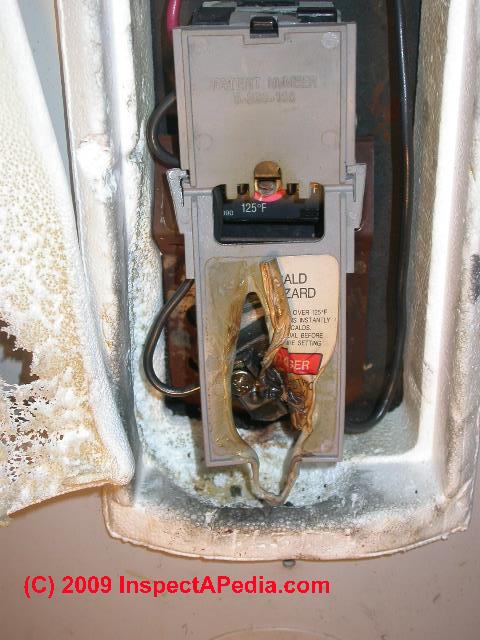Can anyone post the specific section of their state’s SOP that specifically requires the inspector to call out electric water heaters in garages that are not elevated 18 inches above the floor as deficient?
Can the heater thermostat cause any kind of arc when it turns the elements on?
I would assume there could be a small arc as the thermostat closed, but the atmosphere would need to be above the LEL for this to be an issue. As the NEC does not classify the area of a residential garage in any Class or Division the LEL is not an issue so an arc has nothing to ignite.
Washington State Administrative Code, Home Inspectors Standards of Practice.
**WAC 308-408C-180
**
• Report as a fire hazard the presence of any ignition source (gas and electric water heaters, electrical receptacles, electronic air cleaners, motors of installed appliances, etc.) that is within eighteen inches of the garage floor.
Wow. Thanks for posting. I see that the section you cited also calls out motors of installed appliances. How do you handle clothes washers and dryers in the garage in your state?
See the first 5 words in the required SOP that was quoted.
I verbally explain to the client the requirement and possible choices but the language is the language. There is no deviation on my part. Washers, Dryers, refrigerators, freezers, etc.
What is the basis that they use to require the reporting of receptacles which are permitted by the NEC?
As a potential source of ignition. The NEC is not the end all. Some look at it as a minimum standard.
I’m thinking in terms of an HI calls this out as a defect and defers to an electrician. The electrician says that according to the NEC there is no defect so then what?
It is a negotiated work project. Perform the work you are hired to complete. PERIOD. There may be other rules/laws/codes such as those in WA State that I have shown below, that take the NEC, plumbing codes or mechanical codes out of the equation.
So what you’re saying is that there is a local code that prohibits the receptacle below 18" in a residential garage so the SOP for a HI is to report it as a defect?
In my State specific example, I am given no quarter to deviate. I MUST call it out as a fire hazard. Only a fool would fail to put a State Defined fire hazard in the defect portion of the report.
If there are other local / regional / state codes that have a more stringent requirement, then yes, my opinion is that it goes in the defect side of the report. While most use codes as a BASE for reports, many times we make recommendations based on “best building practices”.
IMHO, your job as a hired electrician is not to get in the middle of a negotiated repair or to interpret that negotiated item, it is to perform the repair as requested.
Per the IRC (emphasis added):
The contacts that activate the elements would be considered an electrical switching device.
Thanks and I agree with your statement, but I’m asking specifically about receptacles that are part of the required SOP that Stephen posted in post #24.
I realize that there may be local codes involved that are more stringent than the NEC and am wondering if there is a section in the Washington State electrical code that prohibits the receptacles below 18" in a residential garage. If there such a prohibition then it makes perfect sense to include that in the required call out as a defect, if it is not then why is it in there?
Hmmm…I do not believe a typical electric water heater would create an ignition point within 18 inches. The elements are electric and I do not see where they can create such a condition.
Would you not consider the contacts to be an electric switching device? If so, the the IRC says they must be 18 inches above the floor.
For Texas inspectors, any debate as to whether the contacts are a switching device is moot as the TREC SOP sez:
P.S. I don’t know why the text turned jumbo size on the quote.
What I am saying is to each his own…if your SOP calls for it so be it. I do not have the same concern in a residential garage for an electric water heater but then again…I do not operate under any SOP so again to each his own.
Well…you believe what you want…with that said many things could constitute such an issue…I don’t care how you call it…I don’t see an issue in it.
But then again…I don’t do home inspections anymore either…so have at it.:mrgreen:
PS. Was it within 18 inches?
However - I do concede that IRC (2009) is pretty clear in P2801.6. However, I have not measured one in a while ( or ever) since I am not a plumber and I usually only take power to the TOP of the appliance…lol…if the lower element is within 18" I can see where someone might have an issue…but I happen to find that a weak ignition source…none the less…Code is Code.
Obviously the standard must be followed , but I would like to see data of the typical LEL reading in a residential garage or past cases that brought about this requirement. The NEC does not consider the area an issue.
